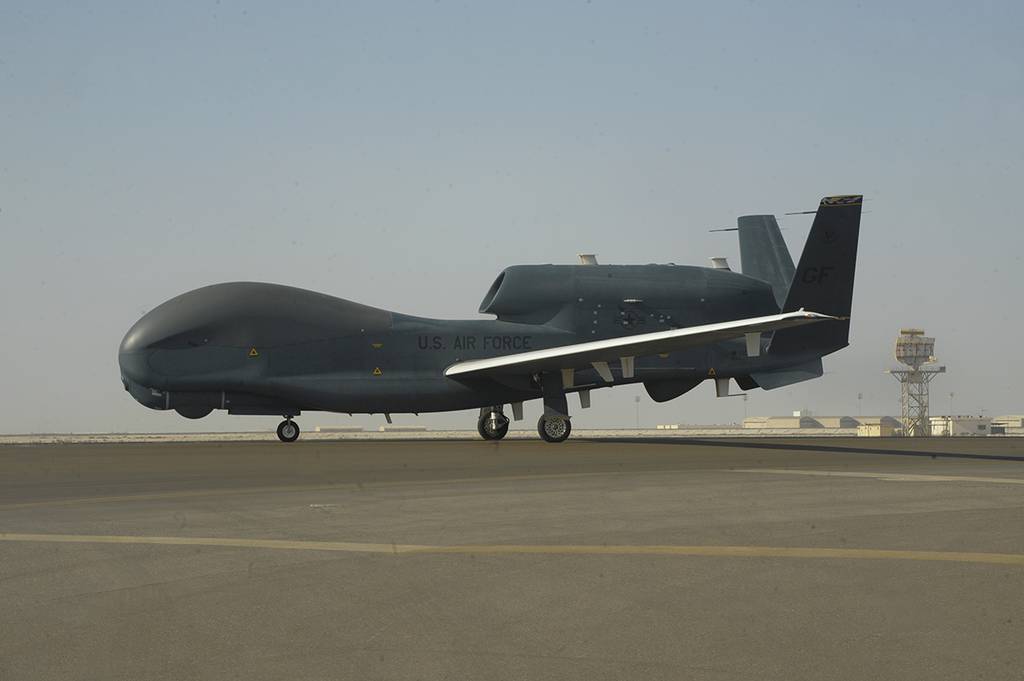WASHINGTON — Iran’s downing of a U.S. surveillance drone has not slowed the U.S. Air Force’s flight operations in the Middle East, its top general said Wednesday.
“We’re continuing to fly. And we continue to fly where we need to be, when we need to be there,” Air Force Chief of Staff Dave Goldfein said at an Air Force Association event.
“This is a conversation we could have in the South China Sea, this is a conversation we could have anywhere in terms of international airspace. In the global commons, we continue to protect those global commons for everyone and we continue to operate where we need to operate.”
On June 19, Iran’s Revolutionary Guard shot down a U.S. Navy Broad Area Maritime Surveillance—Demonstrator drone, a version of the RQ-4 Global Hawk used by the Air Force and a precursor to the Navy’s MQ-4 Triton. BAMS-D, like other versions of the RQ-4, conducts its high-altitude surveillance missions without weapons.
Iran has maintained that the RQ-4 had been flying inside its airspace — a claim that U.S. officials have repeatedly denied. On June 20, Lt. Gen. Joseph Guastella, head of U.S. Air Forces Central Command, presented a map showing the drone’s location over international waters and told reporters that the aircraft had been operating at high altitude approximately 34 kilometers from Iran at the time it was attacked by Iranian surface-to-air missiles.
“This attack is an attempt to disrupt our ability to monitor the area following recent threats to international shipping and free flow of commerce. Iranian reports that this aircraft was shot down over Iran are categorically false,” Guastella said. “The aircraft was over the Strait of Hormuz and fell into international waters.”
The downing of the BAMS-D was also precipitated by a number of attacks on less expensive MQ-9 Reaper drones, which the U.S. Defense Department ties to Iran.
Both Iranian and U.S. leaders have publicly stated that they contemplated actions that could have led to loss of life, which would have greatly escalated the dispute between the two nations. Iranian leaders have said they opted not to strike down a manned P-8 maritime plane operating near the RQ-4 that was shot.
U.S. President Donald Trump also considered a strike on Iranian missile and radar sites as retaliation for the RQ-4 attack, but he stopped the mission because the response — which could have killed as many as 150 people — was not proportionate to shooting down one unarmed drone, he said in a tweet.
Goldfein downplayed U.S.-Iran tension on Wednesday, saying he didn’t see a “significant change” in the Iranian military’s capabilities and that his role as a member of the Joint Chiefs of Staff continues to be providing Trump with a range of military options.
“And so we continue to do that, to make sure that the options that are presented are executable and that he understands the implications. Then of course it’s the decisions of our civilian leadership whether to employ those options,” he said.
Valerie Insinna is Defense News' air warfare reporter. She previously worked the Navy/congressional beats for Defense Daily, which followed almost three years as a staff writer for National Defense Magazine. Prior to that, she worked as an editorial assistant for the Tokyo Shimbun’s Washington bureau.








